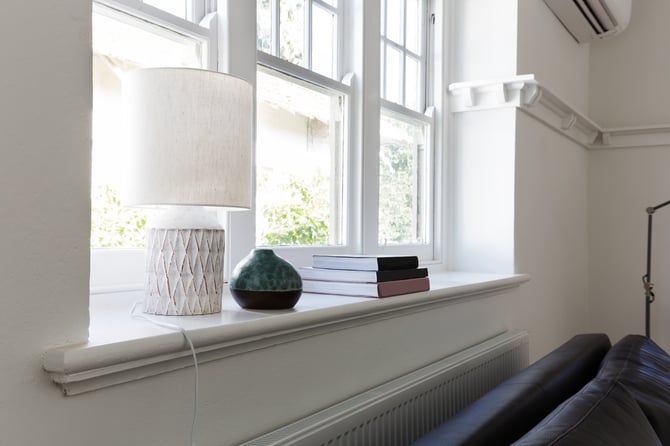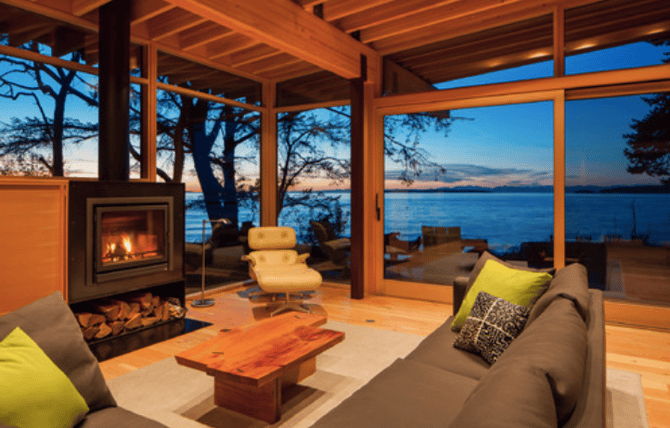Using secondary double glazing for noise reduction is often thought of as the more affordable alternative to double glazed windows. However, this misconception is not giving property owners the full picture.
Firstly, even the best secondary glazing cannot hold a candle to the noise dampening power of a high quality double glazed unit. And secondly, looking at the cost and benefit comparison of double glazing and secondary glazing leaves out the one option that provides both the better noise reduction potential of double glazed units and the cost-effectiveness of secondary glazed windows. Retrofit double glazing offers the best of both worlds and more.
Your windows do a lot for your home or business, shielding out the elements whilst letting natural light pour in. When you decide how to enhance your windows with a soundproofing solution, make sure you base your choice on the facts, not the myths.
Here are the top misconceptions around secondary glazing that you need to know before you start altering your windows.
The Best Option for Noise Reduction is Secondary Glazing
A lot of the promises behind secondary double glazing’s noise reducing benefits are based on comparisons with slim profile insulated glass units (IGU’s). This is misleading. When you hire experienced window professionals to soundproof your windows, they aren’t going to recommend a thin double glazing unit with a tiny airspace or thin glass. After a Thermawood franchisee that understands acoustics assesses the characteristics of your noise pollution, they will determine a customised IGU solution to create the desired sound dampening effect.

They may recommend a wider airspace and glass panes of different thicknesses, special types of glass that have tested noise reduction benefits, and acoustic seals. Compare that to even the best secondary glazing for noise reduction and you’ll be blown away by the difference.
Secondary Glazing is an Easy DIY Project
This isn’t only false, it’s a dangerous assumption for inexperienced property owners. With secondary glazing, a second pane of glass or a clear sheet of acrylic is attached to the existing frame with magnets. The magnets can be stuck on the existing glass with a special adhesive. Once the second glaze is properly measured and cut, it can be applied to your single pane.

This sounds simple in theory, but getting a perfect measure and cut isn’t easy for someone who isn’t used to working with glass or who doesn't have an arsenal of quality tools to use. Another problem is the glass or sheet of acrylic itself. These materials are extremely heavy. One slip or drop and you could have a serious injury along with destroying your secondary glaze.
If your DIY kit doesn’t come pre-drilled to a frame, you’ll have to add this step to your process. Many secondary glazes are drilled into a white aluminium frame, which may or may not fit into the design of your home.
You may put a lot of work and money into your DIY window soundproofing, only to realise you didn’t get the results you had hoped for.
This can happen for several reasons:
- Unless you had a Thermawood franchisee specialising in acoustics come out to measure the frequency and decibel level of the source of your noise pollution, you have no way to determine how much soundproofing you need to make an audible difference in the first place.
- If you don’t address any openings in or around your windows, you may still have noise coming into your home. You’ll need adequate acoustic/draft sealing to complete the job.
- Even if you are an experienced DIYer and execute a flawless secondary glazing conversion, this form of window soundproofing can only address more moderate forms of noise pollution.
Secondary Glazing Preserves the Look of Heritage Windows
Contrary to popular belief, secondary glazing is not the best option for preserving your heritage windows. It will at least allow you to retain your existing timber windows, but your windows won’t look the same. Slapping an aluminium framed sheet of acrylic on the inside of your window isn’t aesthetically pleasing and may even reduce the value of your property depending on how the finished job looks. With sash windows, which are common in heritage buildings, secondary glazing will degrade the functionality of your windows as well as the appearance.

You can, however, have gorgeous windows, with the original charm and beauty preserved with retrofit double glazing. What many people don’t understand is that with Thermawood's patented retrofitting, you are not getting a whole new window installation like with new double glazed windows. The existing timber frame remains. An experienced Thermawood franchisee will use a patented dry glazing process to cut out a small portion of your wooden frame and replace your single pane of glass with a double glazing unit, fitted with acoustic seals to address any cracks where sound could otherwise enter your home.
A Wider Air Gap is the Key to Better Soundproofing
Another misconception you may have heard is that if you use a huge air gap with a secondary glaze, you’ll get great results. A wider air gap is beneficial for noise reduction for both secondary glazing and double glazed windows. But, once you get past a certain point, that bigger gap can actually reduce the thermal insulating properties of your window. A narrow gap makes it hard for air to easily circulate. With a wide gap, you’ll have more circulation and the rate of heat transfer by convection increases.
Secondary Glazing is Always Cheaper than Double Glazing
This is the number one myth that is misleading property owners who are looking for an affordable, effective way to reduce noise that will also retain the charm of their existing windows. Secondary glazing is less expensive than having new double glazed windows installed. It costs about one-third of the price of double glazing. But, retrofit double glazing costs about the same amount as secondary glazing!
This means you can pay a fraction of the cost of having new double glazed windows installed, without having to replace your beautiful timber windows with the PVC windows or attaching an aluminium framed second glaze. And, with a quality retrofit double glazing system, you can have your insulated glass units customised to suit the acoustic requirements of each room in your house, giving your more cost savings and better results.
With secondary glazing, you are still going to have to invest a lot of money, even with a DIY job, but your control over the acoustic and aesthetic results is limited, let alone the other features that may be impacted such as thermal insulation and the rate of moisture build-up.
Make Sure You Are Giving Your Windows the Smartest Soundproofing Option

Your windows give your property character. They are the ‘doorway’ between your indoor space and the sunlight, fresh air and vibrancy of the outdoors. But, as a single glaze, they are also your home’s biggest vulnerability when it comes to noise pollution as well as thermal insulation.
However, when you equip your windows with the best solution for noise reduction, they are no longer a vulnerability but rather one of your property’s most valued assets.
This solution is not secondary glazing. It’s double glazing. And, if you want the best value and aesthetics along with your soundproofing, it’s retrofit double glazing.






